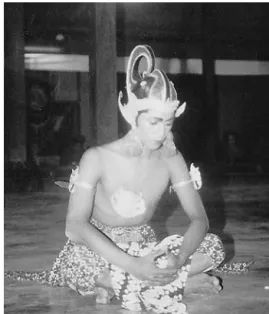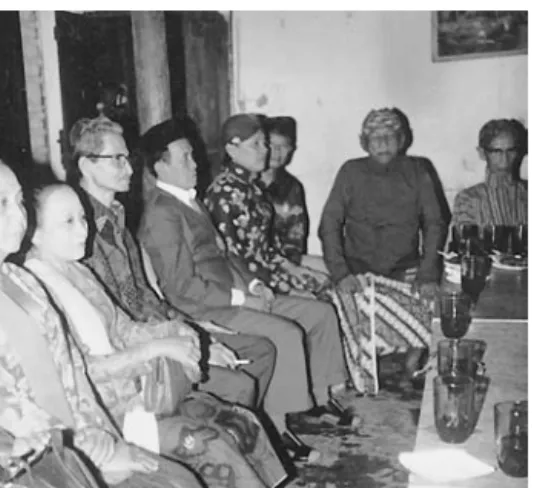Nicole Bourque is a Senior Lecturer in the Department of Sociology and Anthropology at the University of Glasgow. Neil Thinis, a senior lecturer in the Department of Social Anthropology at the University of Edinburgh.
Introduction
Dalby (1988) and Goldstein (1997) presented historical and very contemporary accounts of the communicative properties of the kimono. We look forward to further examples and greater theoretical treatment of the issue in the future work of our colleagues.
Communicational distortion and the constitution of society
Communication distortion, miscommunication of the kind I will describe for Doris and Sid et al.in Wanet, has been treated differently in social science commentary. In short, commonality and difference must be seen as two sides of the same coin.
On the ontological status of honour
After about half an hour, a group of ta pedhia, "boys" (ages from about eighteen to seventy-five) drifted down. In short, the words and language of another culture seemed to provide the anthropological objects of translation as 'signifiers' (in the Saussurean sense), but their 'signifieds', the 'concepts' to which they were supposed to refer (and with which 'cultural translation' , were largely constructed or reconstructed from behavioral observation.
And you might find, for example, that in some parts of the Mediterranean, to be considered honorable, a man would have to murder his own daughter if he found her seduced. Ask a Meganisiot what it means to be philotimos (honorable/in honor) – what the word philotimos 'means' – and they will tell you, with varying degrees of eloquence, that it means to have honor (timi), that it means to have value (aksia), that it means to be honest (endimios) that it means to be generous and hospitable (filoxenos), that it means to be honest (orthios), that it actually means to be good (kalos).
The study of value judgments about honor and shame involves the study of society's highest ideals of time and their embodiment in the ideal type of man. This is, in fact, why Peristiany can claim that the study of honor and shame "involves the study of the highest temporal ideals of society and their embodiment in the ideal type of man" (see note 10 above).
Not talking about sex in India
In this chapter, a gender analysis of the place of 'talk' in sexual relations will seek to elucidate the ways in which our reliance as anthropologists on language not only obscures but even alters local conceptions of sexuality and sexual relations. Here, the public affirmation of the "don't talk about sex" phenomenon is analyzed as a politically and historically situated meta-commentary on the rectitude of Indian society. 1998) 'Sexuality and Sexual Behavior in the Context of HIV/AIDS and STIs: A Study of Youth in India', paper presented at the third meeting of the Working Group on Sexuality and Sexual Behavior Research, Mahaballipuram.
But it's usually Gary who does most of the combining, since he's the most skilled. Neil will drive the tractor to take the corn to Peter, and he will work in the drying room in one of the farm buildings.
Talk, silence and the material world
Mapplethorpe and Needlemoore are neighboring villages, both nestled in the folds and bends of the Wolds. Moreover, it is the firmness of the relationship between local families and local land that characterizes such communities. In this way momentum is maintained and interruptions in continuity are avoided, and the orderliness and purity of farm life are maintained.
Divisions based on land holdings and wealth therefore constitute sacred, ineffable fissures in the seamless fabric of the agricultural way of life. In short, this is an understanding and implementation of the interconnected and interdependent nature of the social and material worlds.
Eating your words
- feeding workers and the spatial dynamics of eating
- feeding friends and relatives on the day of the dead
- photos and eggs
- serving the Corpus Christi feast
- a visit from the canton officials
As during Finados, this recognition and confirmation of status is in the hands of the women. These episodes give an indication of the variety of contexts in which food is used as a means of communication in the Andes. The adoption of the brindis in the episode of the visiting canton officials is an example of this.
Most of the main conclusions to be drawn from this chapter have already been covered in the discussion above. Most of the mestizos I talked to in the area see themselves as better than the Indians.
Sunglasses, suitcases and other symbols
Not letting on about where you are going: in which the anthropologist appears as a
We planned the trip several days in advance, but my father-in-law often instructed me, “There's no need to tell people we're going, there's no need.
Trust, privacy, deceit and the quality of interpersonal
Mystifying your neighbours: in which the writer reappears in Ghanyari as a mature
As she had helped me in the past, I felt that it would be stupid to refuse to help her. The biggest problem as I saw it was that (a) my mother-in-law might be curious to know why I visited Kishori, and (b) I would be unlikely to have a private moment with Kishori to tell him the packet of banknotes, as his relatives and neighbors would no doubt gather in the room to greet me or just see what was going on (and especially if I was bringing gifts for anyone). After dinner, some neighbors came to sit with my mother-in-law in the kitchen, so I made an excuse that I wanted to go into the main room of the house to write some letters.
After chatting for half an hour I started to feel that I would not be able to deliver the money without being seen and I felt that I had to go back home as it was getting late and my mother in law would be worried if she saw me and left. At home, I saw that my mother-in-law was still chatting in the kitchen and did not notice my absence.
Giving with discretion: in which the researcher fulfils further assignments
Rather, it should be practiced in the privacy of the individual's own mind. While the idea of "limited good" was a fairly accurate perception of the state of affairs in hypothetically stable peasant societies, what characterizes peasant societies in the modern world is that they are unstable. I suspect that the "consequences of modernity" are what Giddens says they are for a large number of people in the West.
Lash, Reflexive Modernization: Politics, Tradition and Aesthetics in the Modern Social Order, Cambridge: Polity Press. 1994) 'Reflexivity and its doubles: structure, aesthetics, community', i U. Lash, Reflexive Modernization: Politics, Tradition and Aesthetics in the Modern Social Order, Cambridge: Polity Press.
The temple and the theme park
In the night show, however, the Polynesians rise to a higher state of admiration in the eyes of the tourists. Unsurprisingly, however, much of the comedy at PCC is hardly complimentary to visitors. The features of space and time that make the temple ceremony a unique experience for Mormons are also central to the content and presentation of the PCC.
Comparison of the shape and content of the center with the elements of the temple shows that the center does not only have a function for the tourist. It is an expressive restatement of the temple ceremony; it plays on temple themes and reinforces Mormon beliefs.
Dance, dissimulation and identity in Indonesia 1
Apart from the movement of the feet, this style of court dance is notable for its strict convention in controlling the arms and elbows which are kept square. As we know, court dance is an education of empathy and teaches a person how to be Javanese. Since Indonesian independence, the terms of the dedicated struggle for independence and establishment of the republic have become abstract and formulaic in the contemporary Indonesian state (McVey 1967: 133).
The competitions of the New Order could be interpreted in the same way as the battle dances of the early Yogya court; the apparently aestheticized control of persons in the movements of the dance is the political confrontation that is in the offing. The limitations of disciplined physical practice are the prerequisite for a liberation of the imagining spirit.

Don’t talk – blend
Silence is seen as a reflection of courtesy towards the teacher and the special space of the dojo. It tells us something about the 'culture' of what one needs to know to behave appropriately in the dojo (external components of the practice), but not how to walk a path and 'feel' transformations of the self along the way (internal aspects of practice). Dedication' is one of the most commonly used words to describe people's involvement in aikido practice.
But an even bigger challenge is understanding the circularity of the learning process – the way your body takes you back to the basics over and over again – on the “path”. On one side is a raised platform or 'table', the kamiza, which is the center of the dojo.
Licence revoked
Poetry and calypso are diplomatic strategies, opportunities to present an opinion or “social commentary” in the words of the calypsonians I interviewed. Speaking of such social drama in another context, Victor Turner argues that the theater is a liminal site where the audience can live out part of the performance—the "repressive ritual"—by being immersed in a community of experience. However, in some circumstances, a performer loses various audiences when a performance or calypso song fails; in many cases a break.
The role of kalindas developed especially in the twentieth century, when they set about satirizing society: they published topical songs throughout the year, popularizing them for carnival; they compete with each other in calypso tents and attract tourists to the island (born 1994). In Montserrat, both calypso and carnival have become an integral part of the cultural and national consciousness of the islanders.
